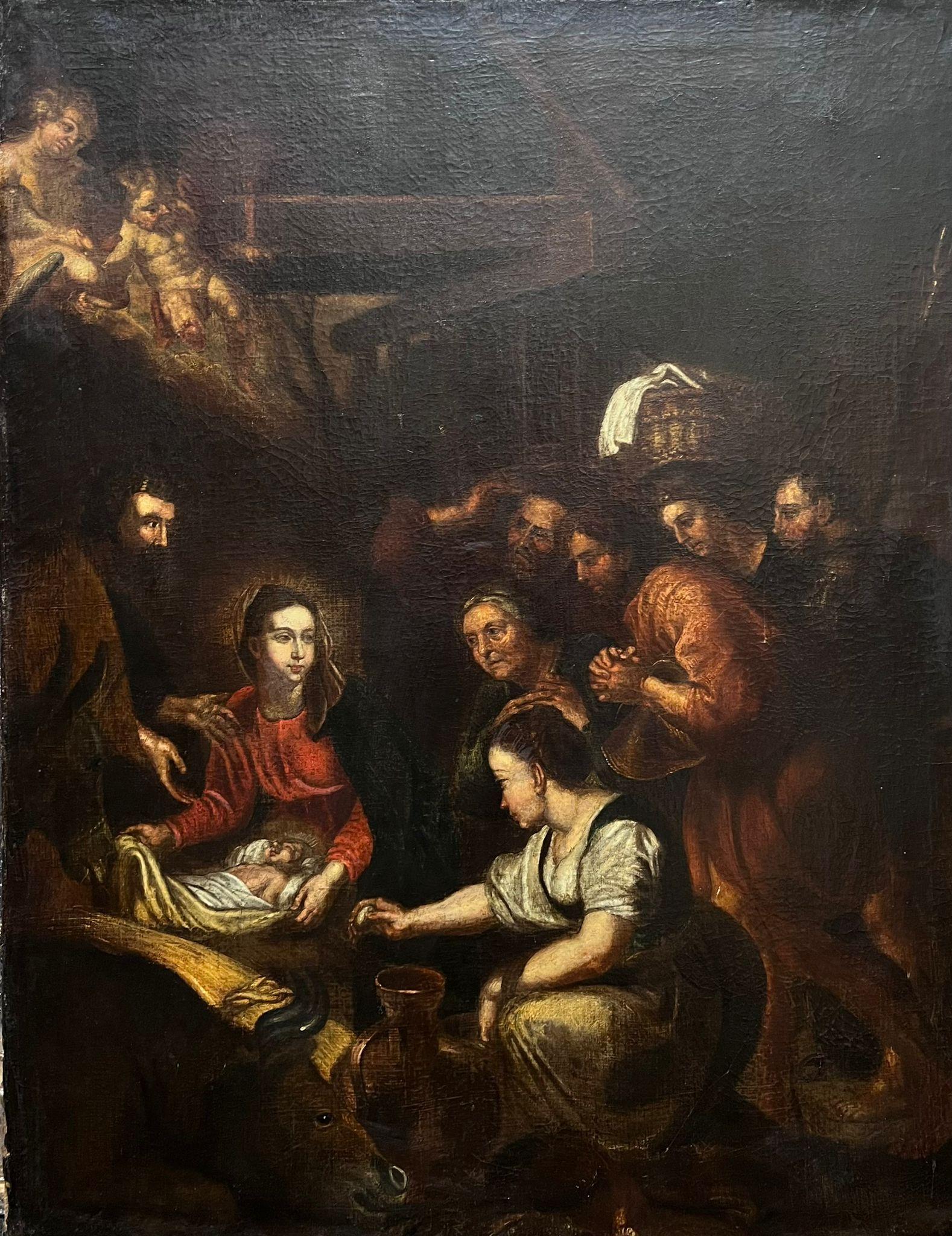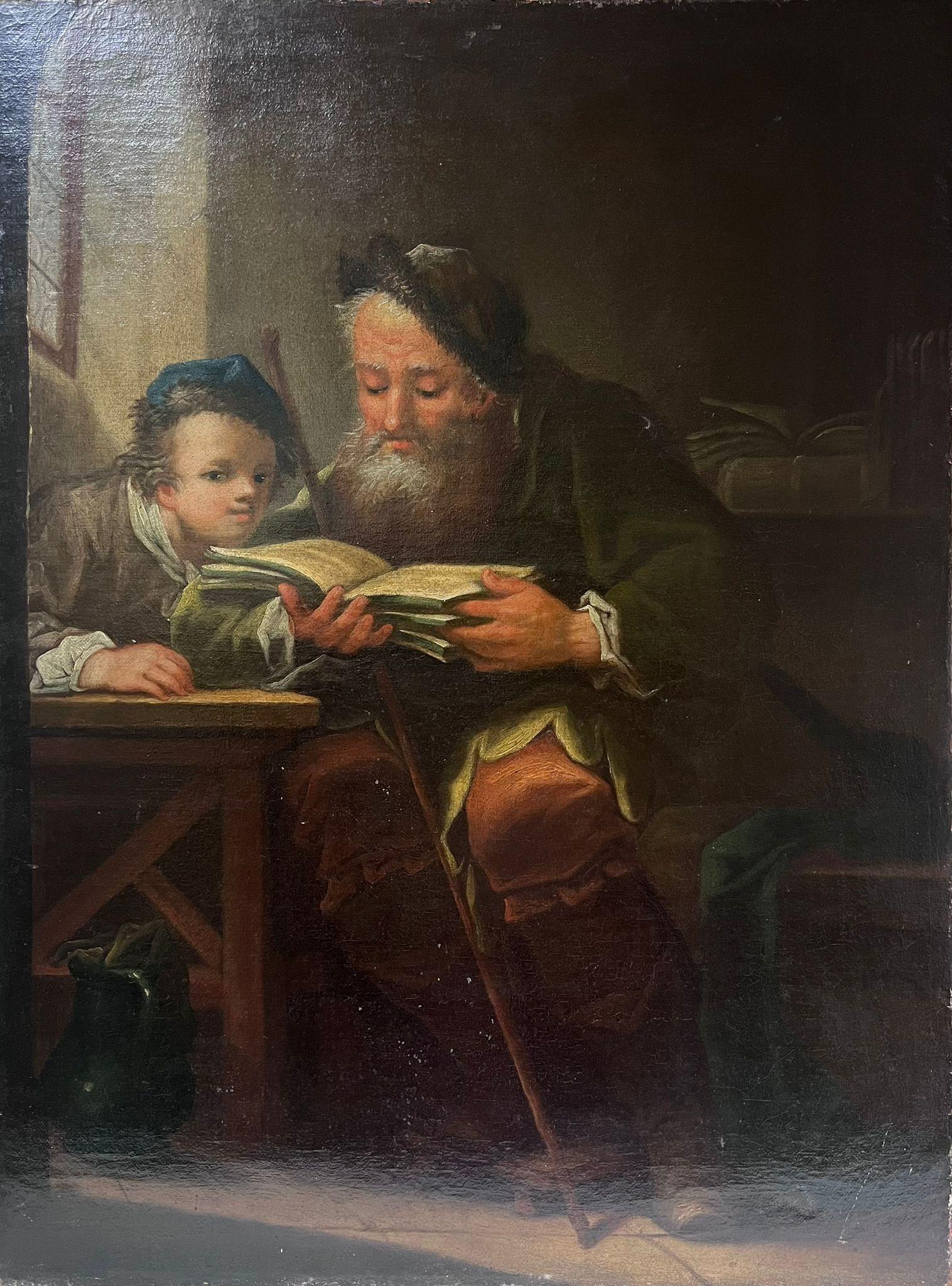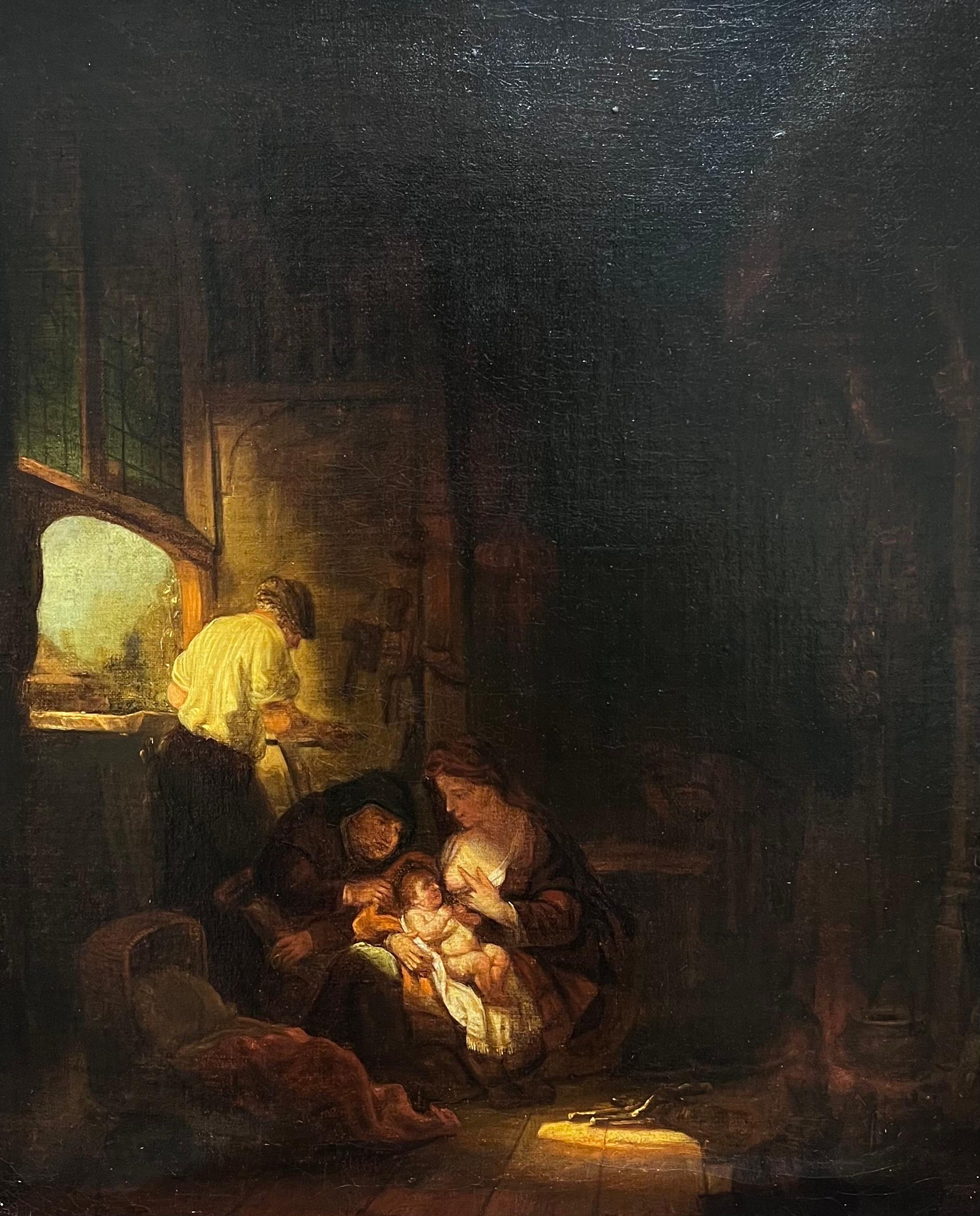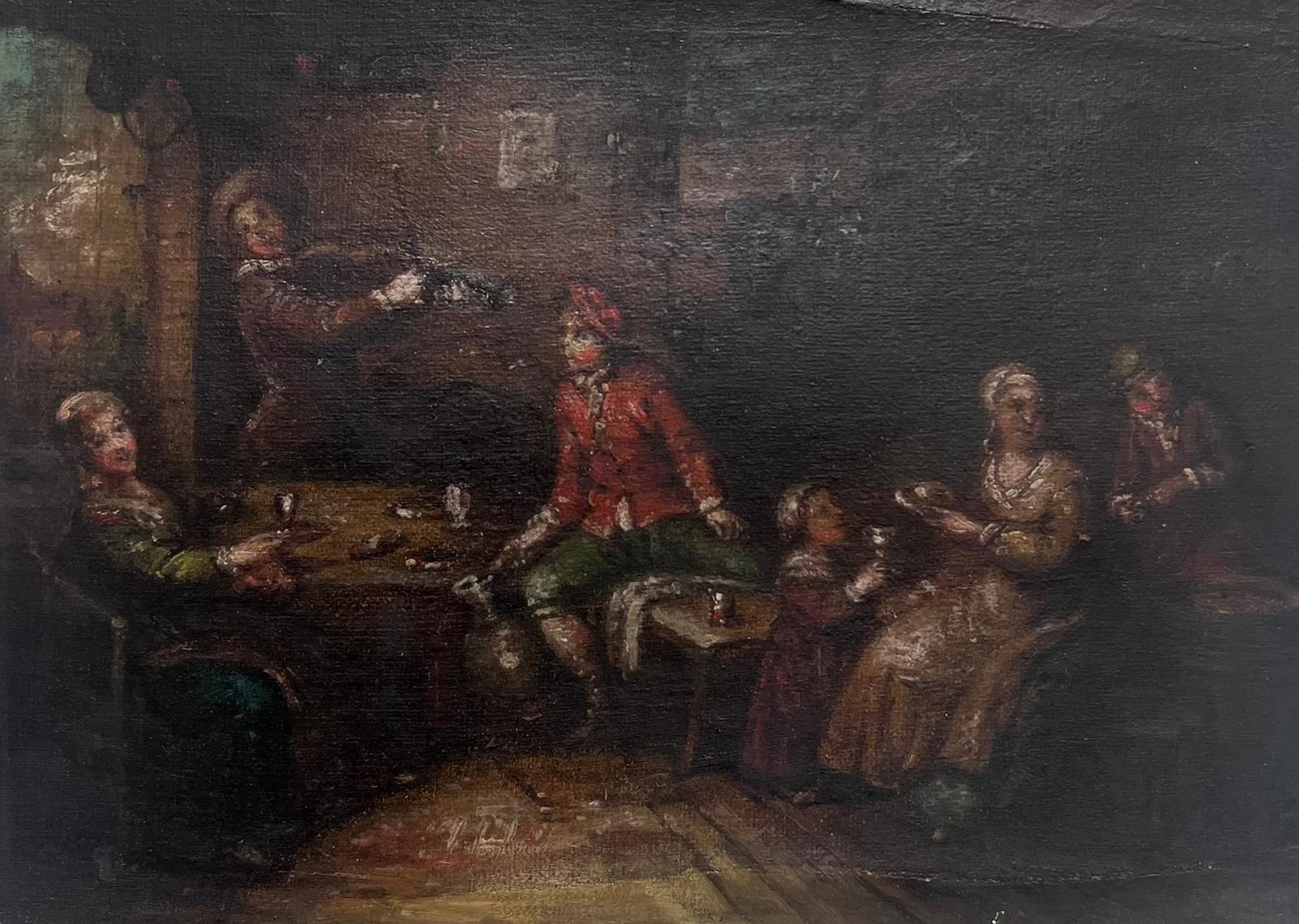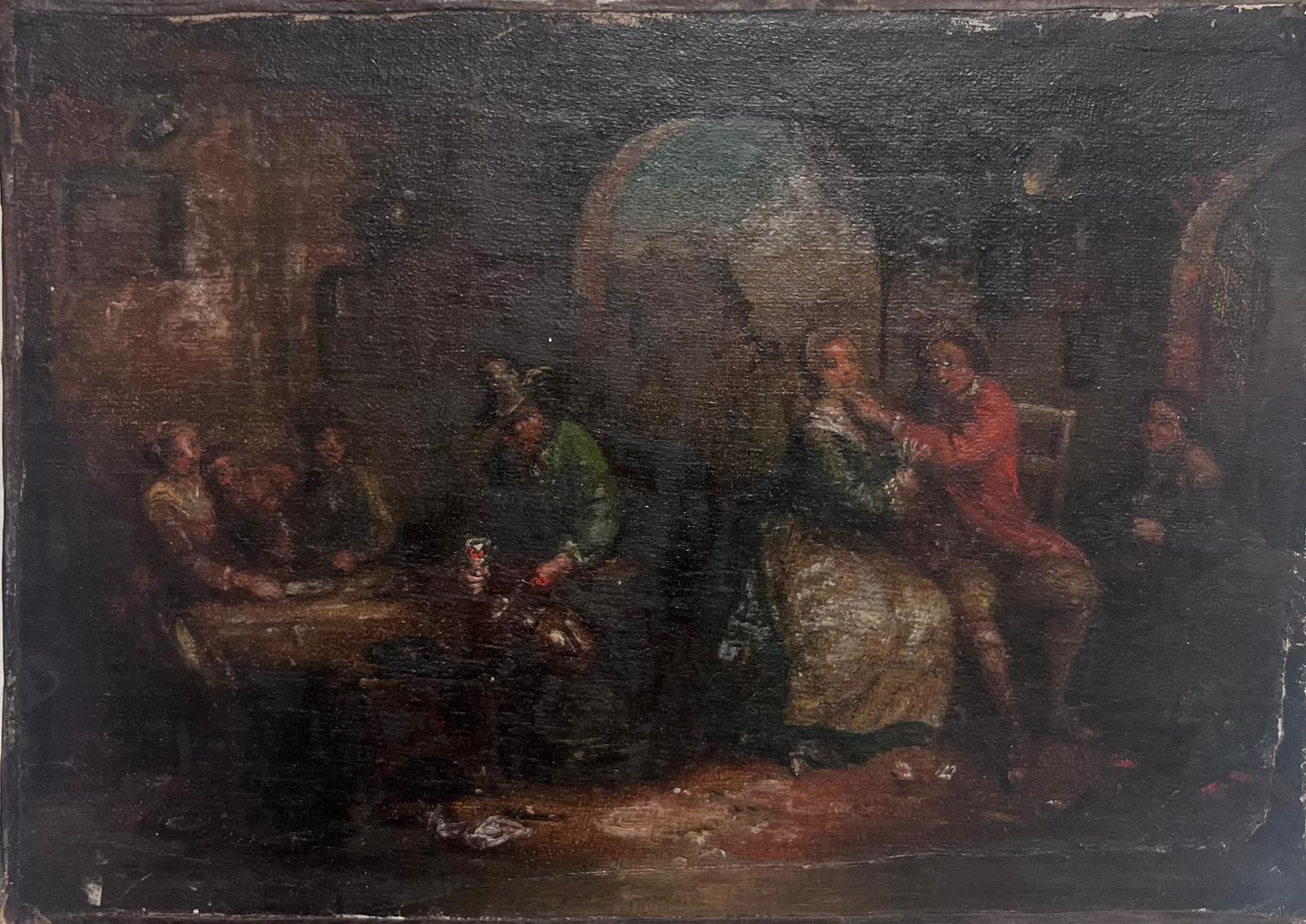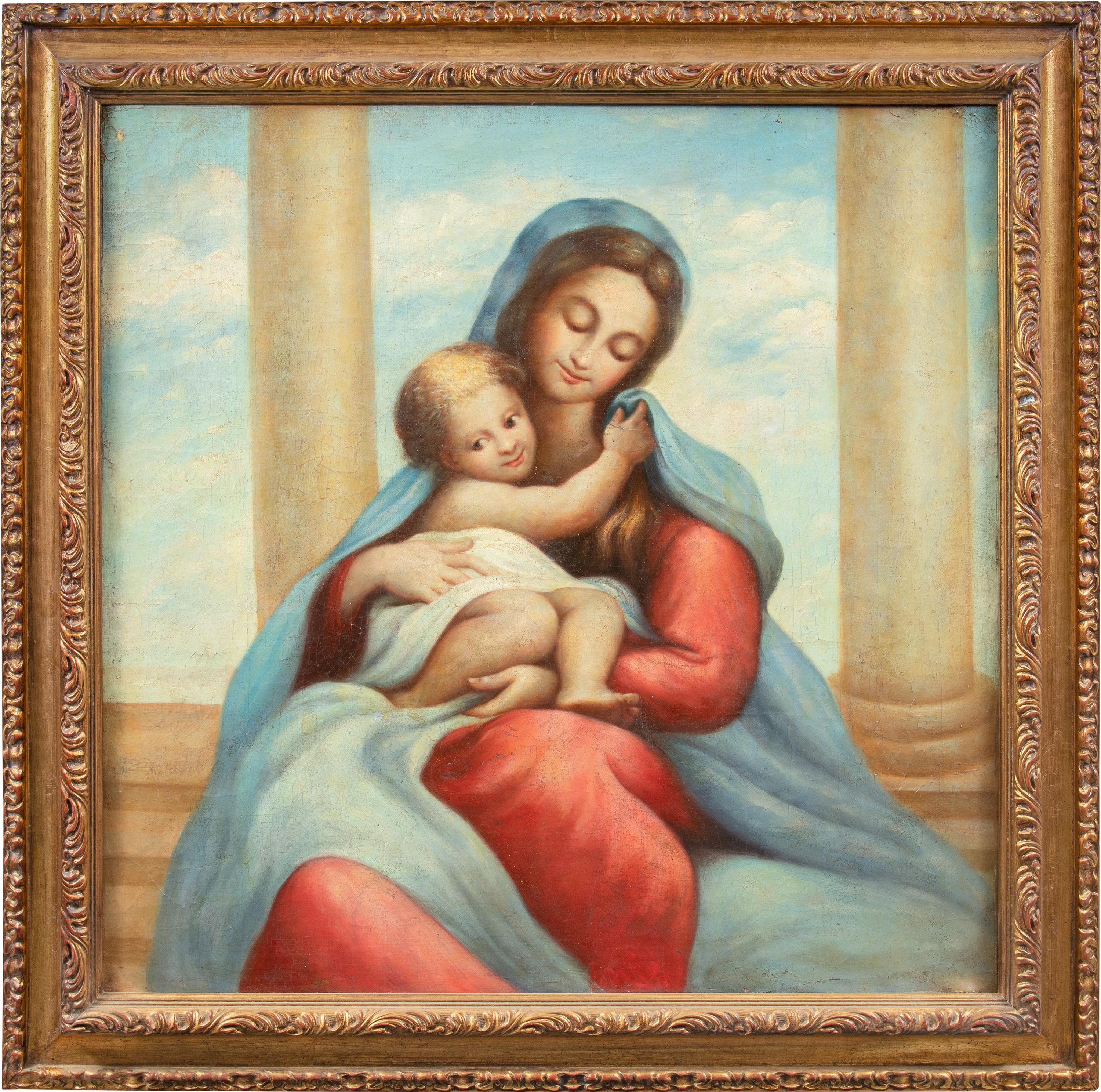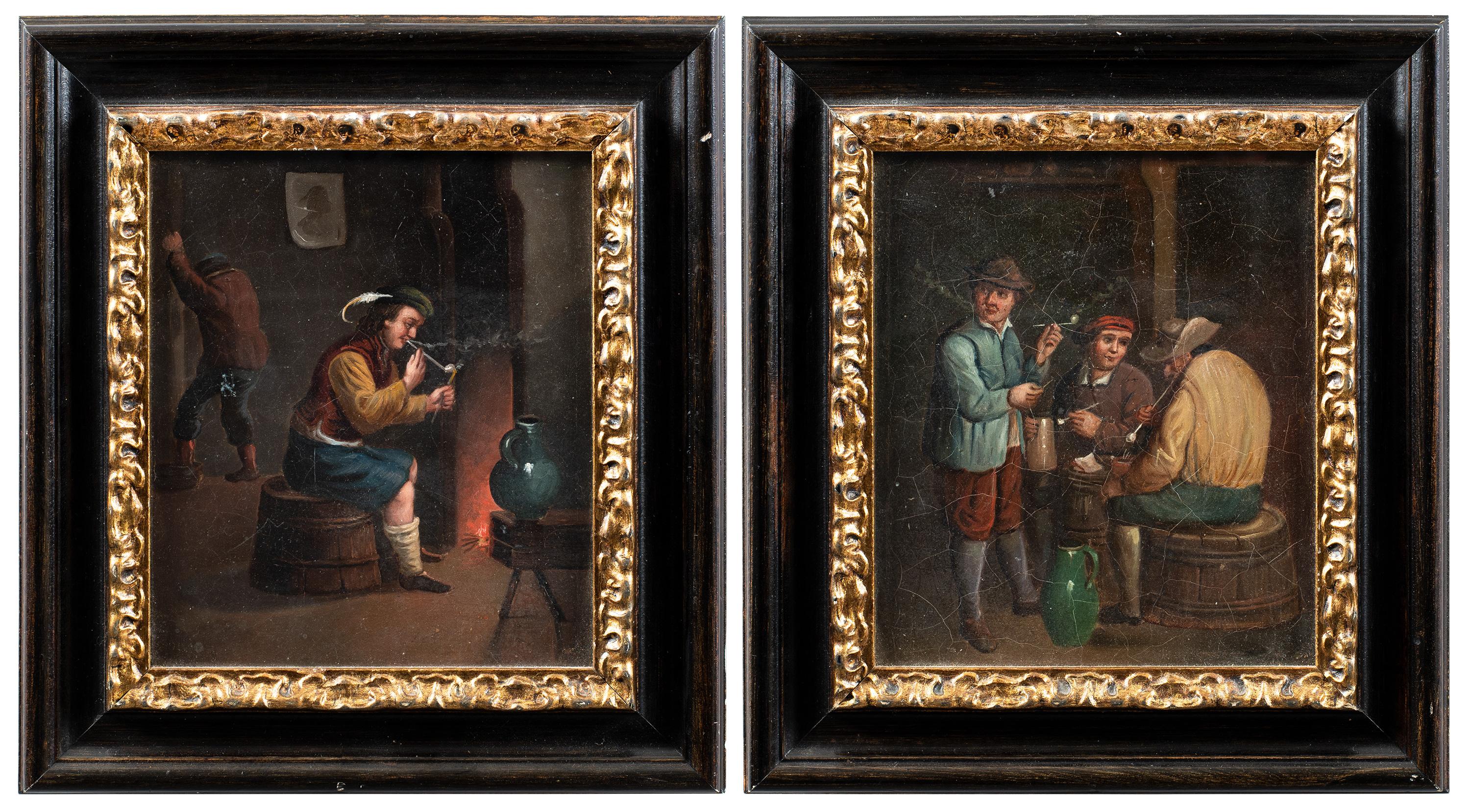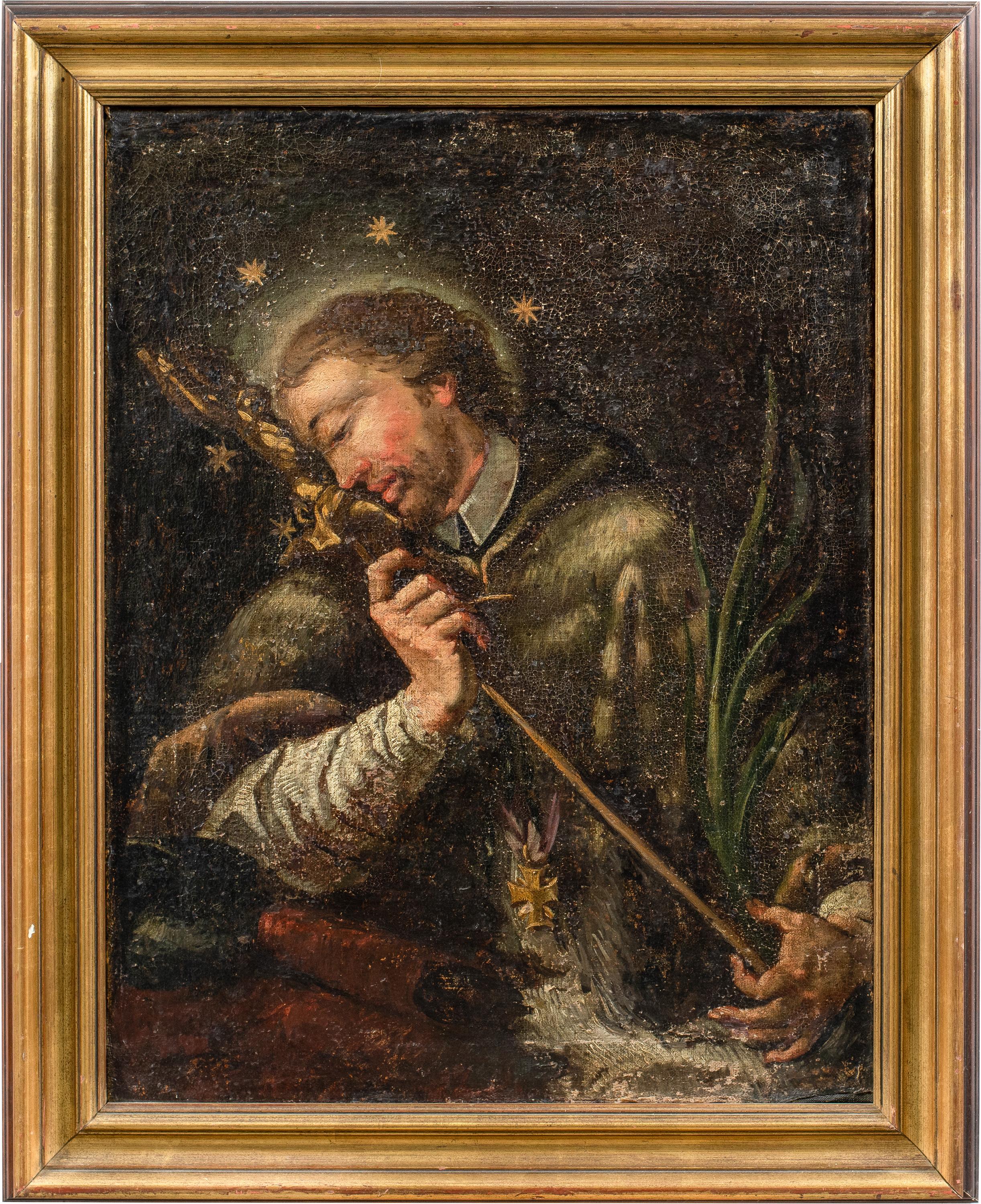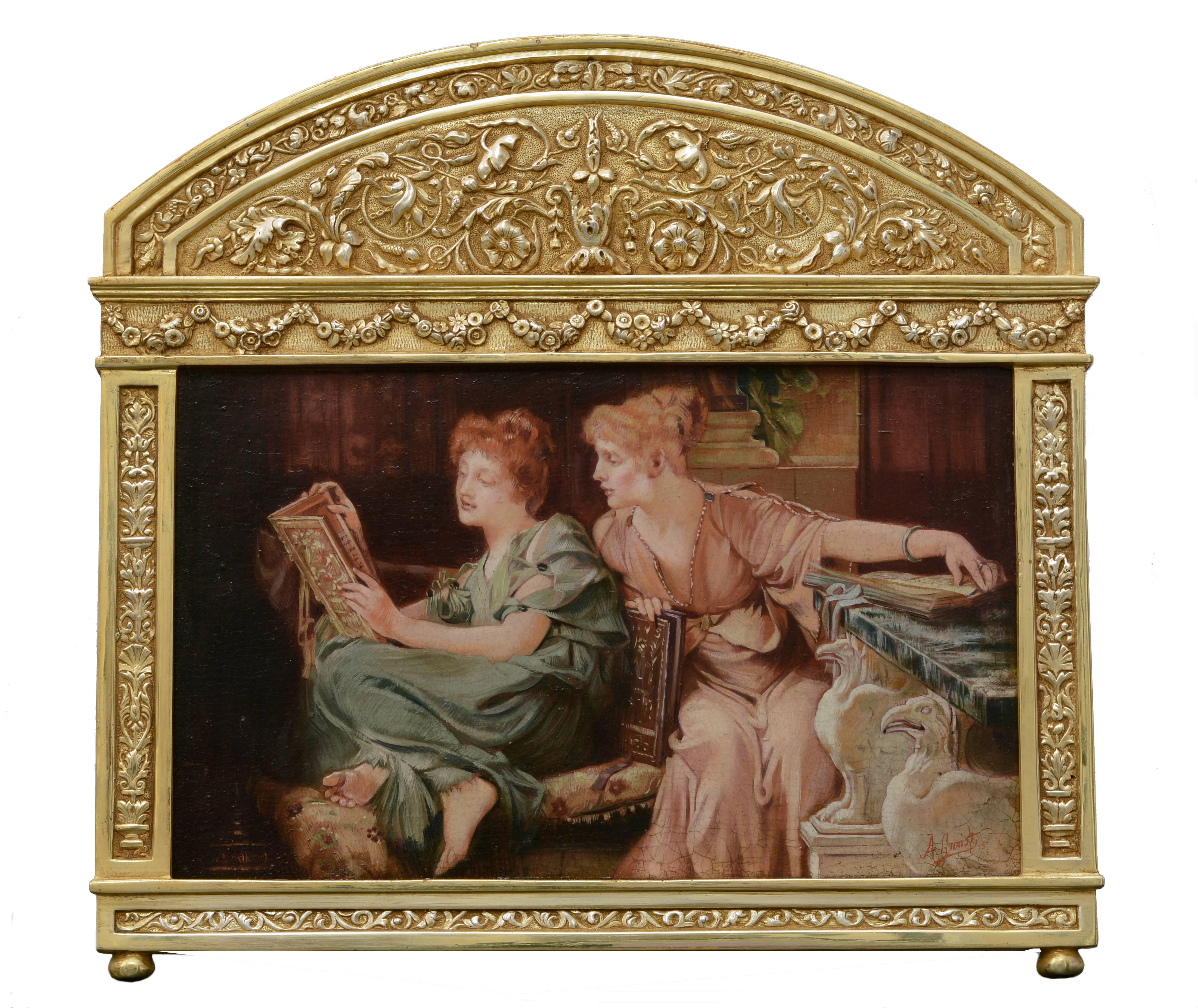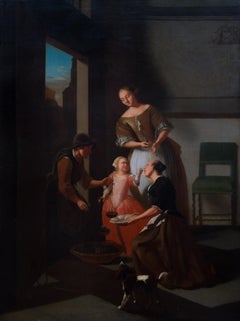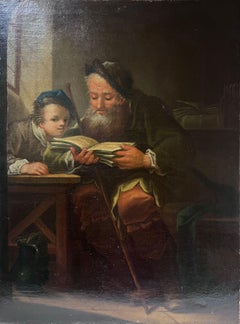
The Torture of the Vestal Virgin, a painting by Jean-Frédéric Schall (1752-1825)
Want more images or videos?
Request additional images or videos from the seller
1 of 13
Jean-Frédéric SchallThe Torture of the Vestal Virgin, a painting by Jean-Frédéric Schall (1752-1825)1789
1789
About the Item
- Creator:Jean-Frédéric Schall (1752 - 1825, French)
- Creation Year:1789
- Dimensions:Height: 32.82 in (83.37 cm)Width: 27.32 in (69.4 cm)
- Medium:
- Movement & Style:
- Period:1780-1789
- Condition:23 13/16” x 18 1/2“(60.5 x 47 cm) - Framed: 32 13/16” x 27 5/16” (83 cm x 69.3 cm) Provenance: Mr. de Montmarqué; Mr. Desparmet- Fitz-Gérald (circa 1930); Sotheby's New York sale on January 29th 2021 Louis XV giltwood "pastel" frame.
- Gallery Location:PARIS, FR
- Reference Number:1stDibs: LU1568211303522
About the Seller
5.0
Vetted Seller
These experienced sellers undergo a comprehensive evaluation by our team of in-house experts.
Established in 2020
1stDibs seller since 2021
8 sales on 1stDibs
Typical response time: 2 hours
More From This SellerView All
- Baroque silver Vase with Flowers with a Fruit Tray and a Clock by A. ZuccatiLocated in PARIS, FRThis unpublished composition is a recent addition to Adeodato Zuccati’s catalog. The study of this painting by Gianluca Bocchi, an Italian art historian specializing in Italian still lives, is available upon request. This composition is typical of the productions of Adeodato Zuccati, an Emilian painter...Category
Late 17th Century Old Masters Still-life Paintings
MaterialsCanvas, Oil
- Still Life with Herring, a panel by the workshop of Georg Flegel (1566 - 1638)Located in PARIS, FRFred G. Meier, art historian, confirmed with the following comment, after a photographic examination of the work, that it belongs to the studio of Georg Flegel...Category
1630s Old Masters Still-life Paintings
MaterialsOak, Oil
- Baroque Interior, a drawing attributed to Francesco Battaglioli (1725 - 1796)By Francesco BattaglioliLocated in PARIS, FRThe technique of this luminous architectural drawing with its rigorous perspective is perfectly representative of the creations of the Venetian school’s 18th century vedutists. Simil...Category
Mid-18th Century Old Masters Interior Drawings and Watercolors
MaterialsPaper, Ink
- Herminia and the Shepherds, a painting by Francesco de Mura (Napoli 1696 - 1782)By Francesco de MuraLocated in PARIS, FRIn this masterly painting, Francesco de Mura presents the meeting of Herminia and the shepherds, a famous episode taken from the seventh canto of Torquato Tasso's Jerusalem Delivered...Category
1760s Old Masters Figurative Paintings
MaterialsCanvas, Oil
- The Parade of Swiss Guards a painting on canvas by Gabriel de Saint-AubinLocated in PARIS, FRIn this painting, Gabriel de Saint-Aubin, the great chronicler of the reign of Louis XV, takes us to the annual parade of the Swiss Guards at the Plaine de...Category
1760s Old Masters Figurative Paintings
MaterialsCanvas, Oil
- Portrait of Jean-Baptiste Greuze, painted on linen by his daughter Anna GreuzeLocated in PARIS, FRThis replica of the last self-portrait of Jean-Baptiste Greuze painted in 1804, executed by his daughter Anna at her father's side and recently rediscovered, provides us with a poignant image of the great artist, represented with panache despite the disillusions of life. 1. Jean-Baptiste Greuze Jean-Baptiste Greuze was the sixth child of a roofer from Tournus and retained a certain rusticity in his behaviour from his provincial childhood, beyond his taste for describing picturesque scenes of the countryside. He initially started training with a little-known painter from Lyon, Charles Grandon, before his genius was recognised in Paris where he became a full-time student of the Académie (of Painting) in 1755. He exhibited his work for the first time at the Salon during the summer of 1755, before leaving on a trip to Italy in the company of Louis Gougenot, abbot of Chezal-Benoît. Upon his return to Paris, Greuze became a prolific painter, participating widely in the Salons held between 1759 and 1765, to which he sent no less than 63 paintings: numerous genre scenes (The Marriage Contract, The Beloved Mother), but also portraits of his family circle, of courtiers and art lovers, or of his colleagues. The Academy closed the doors of the Salons to him in 1767 for not having produced his reception piece within six months of his reception, as was the tradition. He worked actively on this painting (Emperor Severus rebukes Caracalla, his son, for trying to assassinate him ) until the summer of 1769, tackling historical and mythological subjects for the first time. Once this was completed, he was then fully admitted to the Academy, but as a genre painter, and not as an historical painter, which had been one of the greatest humiliations of his life. Greuze then refused any participation in events organised by the Academy or its successor, the Academy of Fine Arts until 1800. Abandoning history painting, he gave a new twist to genre scenes, bringing them closer to history painting, as in this pair of canvases which constitutes some of his masterpieces: The Paternal Curse: The Ungrateful Son and The Paternal Curse: The Punished Son . Married in 1759 to Anne-Gabrielle Babuti, the daughter of a Parisian bookseller, his marriage was unhappy and his wife probably frequently unfaithful. The institution of divorce enabled him to record their separation in 1793, keeping his two daughters Anna-Geneviève, born in April 1762, and Louise-Gabrielle, born in May 1764, with him. Little is known about his daughter Anna except that she was herself a painter and lived with her father until his death. It is likely that most of the paintings she produced up to that date were attributed to her father, whose technique she shared to a great extent, making it extremely difficult to establish an autonomous corpus of her paintings. Greuze died in his studio at the Louvre on March 21st 1805. The attention paid to the expressivity of his characters and the emotional charge they convey enabled Jean-Baptiste Greuze to enjoy immense popularity with the eighteenth-century public, and they still constitute Greuze's true modernity. As the artist said, "I dipped my brush in my heart". Greuze was also an exceptional draughtsman and a portraitist of immense talent and exceptional longevity who painted both the Dauphin (the son of Louis XV and father to Louis XVI) and the young Napoleon Bonaparte. 2. Greuze's self-portraits Greuze was very much influenced by Dutch paintings during all his life. While the source of his inspiration for genre scenes can be found in Gerard Dou...Category
Early 1800s Old Masters Portrait Paintings
MaterialsLinen, Oil
You May Also Like
- The Grape Seller - Workshop of Jacob OchterveltLocated in Stockholm, SEJacob Ochtervelt (Workshop) The Grape Seller oil on canvas unframed: 80.7 x 61 cm.; 31 ¾ x 24 in. framed: 109.5 x 89 cm.; 43 1/8 x 35 in. Essay: This captivating piece, originating from the studio of the revered Dutch artist Jacob Ochtervelt, mirrors the composition of a signed and dated 1669 canvas by Ochtervelt that is presently housed in the Hermitage museum. Its subject, "The Grape Seller" immerses us in a typical 17th-century interior, replete with characters from various strata of society. At the center, a fruit vendor is depicted bending over to weigh grapes for the buyer. A child hands some of the grapes to her mother to taste, their attentive maid standing by. The backdrop showcases typical Ochtervelt details: a hint of the city visible through the doorway, light filtering in through an overhead window, and a playful dog at their side. The exquisite quality of the piece is evident in the minutiae, such as the intricate detailing of the mother's earring, which in reality spans only a few millimeters yet boasts impressive attention to detail. Initially, Sotheby's considered this work to be an autograph piece by Ochtervelt. But due to some uncertainty, it was auctioned as Workshop of Jacob Ochtervelt. On the other hand, the esteemed Cabinet Turquin in Paris leans toward attributing the piece directly to Jacob Ochtervelt himself. The painting is framed in an authentic period frame, which has been delicately restored by Stockholm's Förgyllning och Bildhuggeri. The frame retains its age-old patina and, while in used condition, has minor imperfections adding to its charm. Another interesting thing worth to mention is the painting's provenance. It was once owned by the 1st Viscount Rothermere (1868-1940), the founder of the Daily Mail and Daily Mirror...Category
17th Century Old Masters Interior Paintings
MaterialsCanvas, Oil
- Baby Born in Stable Interior Fine Dutch 18th Century Golden Age Oil PaintingLocated in Cirencester, GloucestershireThe New Born Baby (a version of the Nativity?) Dutch School, 18th century oil on canvas, framed framed: 21 x 18 inches canvas: 18 x 15 inches provenance: private collection, Europe c...Category
18th Century Old Masters Figurative Paintings
MaterialsOil, Canvas
- Antique French Oil Painting Young Boy being Read to by Elderly Man 1800'sLocated in Cirencester, GloucestershireThe Lesson French School, early 19th century oil on canvas, unframed canvas: 32 x 24 inches provenance: private collection condition: good and sound conditionCategory
Early 19th Century Old Masters Figurative Paintings
MaterialsOil, Canvas
- 18th Century French Oil Painting Tavern Scene Interior Figures & Violin PlayerLocated in Cirencester, GloucestershireViolin Player in Tavern 18th century French School oil on canvas canvas: 8 x 11 inches provenance: private collection, France condition: good and sound conditionCategory
18th Century Old Masters Figurative Paintings
MaterialsCanvas, Oil
- 18th Century French Oil Painting Tavern Scene Interior Merry Making FiguresLocated in Cirencester, GloucestershireMerry Makers in the Tavern French School, 18th century oil on canvas canvas: 8 x 11 inches provenance: private collection, France condition: good and sound conditionCategory
18th Century Old Masters Figurative Paintings
MaterialsCanvas, Oil
- Antique Italian painter - 19th century large figure painting - Virgin childLocated in Varmo, ITItalian painter (19th century) - Madonna and Child. 100 x 100 cm without frame, 121.5 x 121.5 cm with frame. Antique oil painting on canvas, in a carved and gilded wooden frame. C...Category
Late 19th Century Old Masters Figurative Paintings
MaterialsCanvas, Oil
Recently Viewed
View AllMore Ways To Browse
Interior Antique
World Of Interiors
The World Of Interiors
Interior Photos
Dark Interiors
Antique French Interiors
French Antique Interior
Interior Room Doors
Antique Doors Interior
Antique Interior Doors
Interior Antique Doors
Interior Door Antique
Interior Doors Antique
Antique Style Interior
Interior Of A Museum
Classical Interior
Carved Interior Door
Paintings Of Interior Spaces
